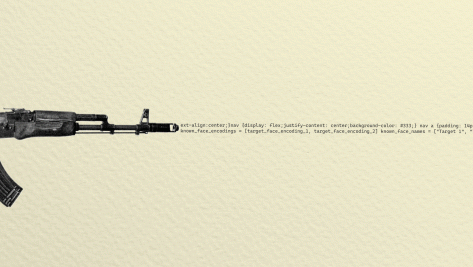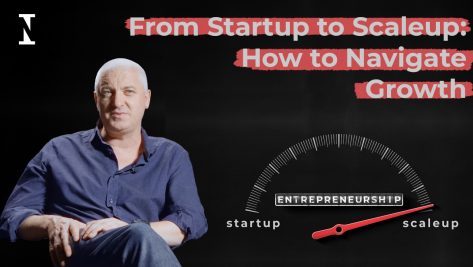The European fashion industry has seen strong growth despite the economic crisis and the collapse of consumer spending, thanks to the success of fast fashion. The key to this business strategy is to constantly renew the merchandise on offer in response to demand, thereby maximizing customer satisfaction. The frequency with which collections are rotated depends on each brand’s structural cost and how its competitors operate. Companies capable of creating and quickly distributing their products at low cost are therefore more likely to capture a large market share. The emergence of fast fashion dates back to 1990. The concept was originally proposed as a way to improve textile manufacturing processes and optimize production times. With this model, groups like Inditex, Mango, H&M, and Cortefiel have seen exponential growth, becoming leading brands in the sector in just fifteen years.
Fast fashion is not low-cost; it’s a value proposition that isn’t the cheapest on the market but does offer a good balance between quality, price, and experience. This business model adopts a segmented diversification within the fashion world in order to reach multiple audiences with different value propositions. Cortefiel, for example, encompasses brands such as Pedro del Hierro, Springfield, and Women’secret, while Inditex has a similar scheme with Massimo Dutti, Zara, Pull&Bear, Stradivarius, and Bershka. Mango has also started to adopt segmentation and, at the lowest end in terms of value, H&M has opted for multi-format diversification.
The fast-fashion business model consists of reducing production and transport times in order to reach consumers through a brick-and-mortar or virtual store in the shortest possible time. One characteristic of these firms is that they mimic luxury brands and cultivate a brand code, rather than simply covering the consumer’s needs in terms of clothing or price. A second differentiating factor is the way these companies operate. They design the business in their factories and have a powerful logistics system that allows them to reduce time to market. Under this definition, Primark, the Irish clothing and accessory chain, would not be considered fast fashion, but rather low-cost. Although Primark has adapted some of its actions and content to the fast-fashion trend—using codes similar to those of Inditex and Cortefiel, emphasizing the place where its products are sold, and taking steps to cultivate the brand’s appearance—its production cycle is not based on the fast-fashion format. Indeed, for companies of this sort, a crisis in the sector can provide a sudden boost in the form of canceled orders and the release of large amounts of quality production onto the market at competitive prices.
Fast-fashion groups adopt a segmented diversification within the fashion world in order to reach multiple audiences with different value propositions.
Brand essence
Fast-fashion operators retain as much of the essence of their brand as they can. When Inditex, Mango, and H&M operate with large franchise holders, they do so with a full commitment to execution, that is, to protecting the selected ranges of collections. Although they must later make local adaptations, they maintain their brand essence through their considerable capacity for real-estate management and replication.
This all forms part of a vertical integration process, which is ultimately an obsession with constant control over the brand and the process. Basically, the idea is to be able to respond to the market, to correct the interpretation of current fashion, and to bring the product to market in record time.
The original activity of both Inditex and Cortefiel is manufacturing. Once they realized that the safest and most interesting line of business was to dedicate their production capacity to company-owned stores while also maintaining a system of cooperatives, they were able to start turning out collections very quickly. These firms operate by getting the gist of market trends by surveying their own and other companies’ proposals, fashion shows, advertising, and the icons admired by customers. They then react, establish particular lines, and correct their errors before finally, through the system of cooperatives, manufacturing products in the group’s own factories. This scheme cannot be applied to all of the company’s products, stores, or brands, nor can it be used all the time, but does entail an adaptive capacity that leads to success and makes it possible to understand the business in a different way.
The ability to make products available to customers is the great engine of the business. In the early 20th century, second-tier cities were served by tailors. Somewhat later, department stores got into the catalogue sales business. The idea was to sell products at a distance in order to increase capillarity. Migration to large cities gave rise to modern commerce. Basically, the acceleration of product distribution laid the groundwork for the fast-fashion model, producing a system in which brands help content and services along in their journey. In addition to this factor, important roles are played by management, planning, and the acceleration of the logistical process in a determinative global economic environment.
The diminishing cost of globalizing and offshoring production, coupled with the experience of planning and managing factories, cooperatives, and shops, has triggered the development of logistics. This industry—sustained by sea, air, and land transport—has allowed a significant increase in volume and given rise to a previously unknown way of operating.
The goal is to transmit the codes of luxury, to have storefronts on the best squares and streets, and to produce an experience that reflects a new form of customer behavior.
Keys to the value chain
In the traditional value chain, the sequence to follow was design, manufacturing, distribution, and delivery to customers. Inditex was the first textile group to pave the way for fast fashion. Customers transmit messages when they visit the company’s stores; the stores, in turn, must interpret these messages and meet the customers’ demands. The mission of these establishments is to tell the design department what they really need so that the designers, working closely with suppliers, can give the customers what they want. From a strategic point of view, this mode of operation is a paradigm shift: an obsession with customers. What do they want and how can we best give it to them? To operate in this way, the company must maximize loyalty, understanding, and empathy. When it comes to empathy, there are multiple levels: in the luxury segment you get unfriendly salespeople, while the staff of department stores tend to be friendlier. But fast-fashion retailers are empathetic: they are focused entirely on the customers and know their place.
Multi-format companies are based on a common core of central services—administration, finance, ICT, expansion, operations, and human resources—that provide assistance to the entire organization. Companies like Springfield, Women’secret, and Pedro del Hierro are commercial formats—brands specialized in areas like customer management, design, specialized purchasing, and sales networks. They have very different types of customers, but the common core provides everything they need to meet their customers’ needs and deal with threats from the competition. Their aim is to focus squarely on the consumer.
Marketing mix
Marketing plays a key role in fast fashion by creating the desire to consume the brands’ new products. It does this by promoting the idea of fashion as something quick, inexpensive, and disposable. It’s not just the product, the price, and the place; the goal is to transmit the codes of luxury, to have storefronts on the best squares and streets, and to produce an experience that reflects a new form of customer behavior.
The marketing of the 20th century highlighted the product itself—an approach based on the available supply. Today, the customer is the one making the rules, so the marketing mix must be established on the basis of demand. When buying clothes, consumers want an experience that conveys lifestyle, fashion, belonging, etc., and this reality has altered the marketing mix. For today’s new times. the mix must include an element of positioning—a clear definition of who you are. In today’s social and digital environment, communication is a two-way street where customers play an active role in their conversations with brands. Any 21st-century company that wants to succeed must consider placing the customer—not the product—in the spotlight of its marketing strategies.
Product, price, distribution, and promotion are classic elements of the marketing mix, but they are unable to withstand a 21st-century analysis. They are remnants of a push strategy—making sure the product reaches the customer. Today’s market requires a pull strategy—responding to the customer’s demand.
© IE Insights.











